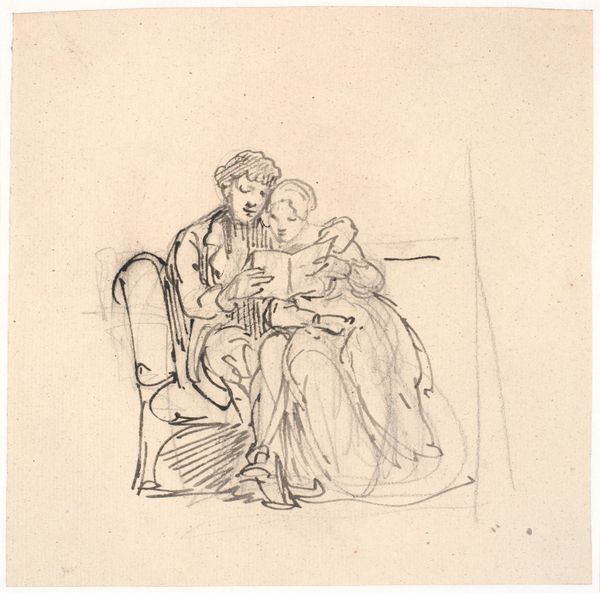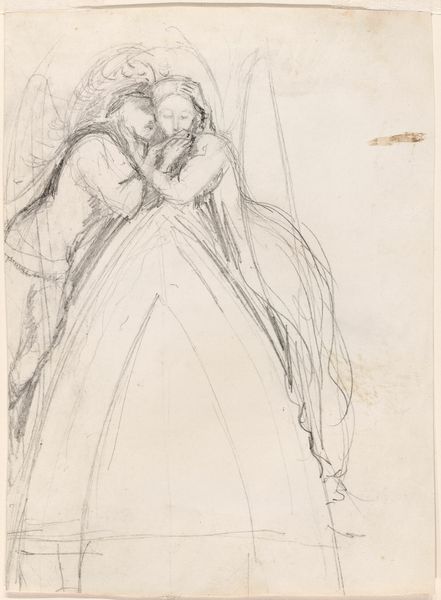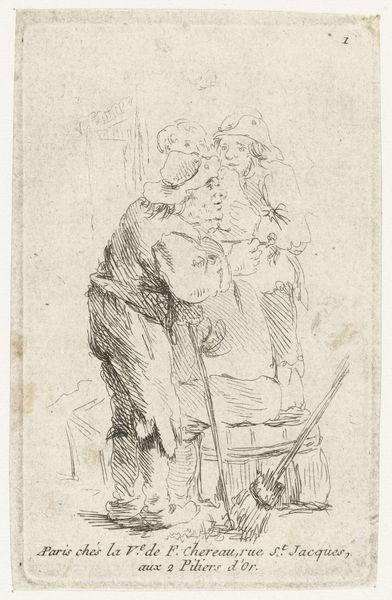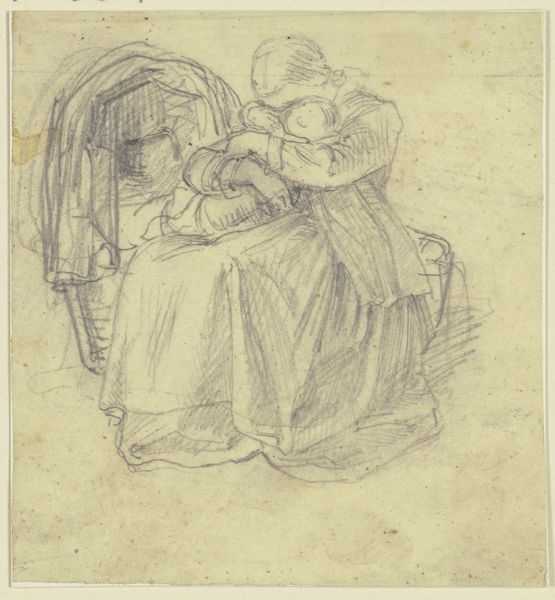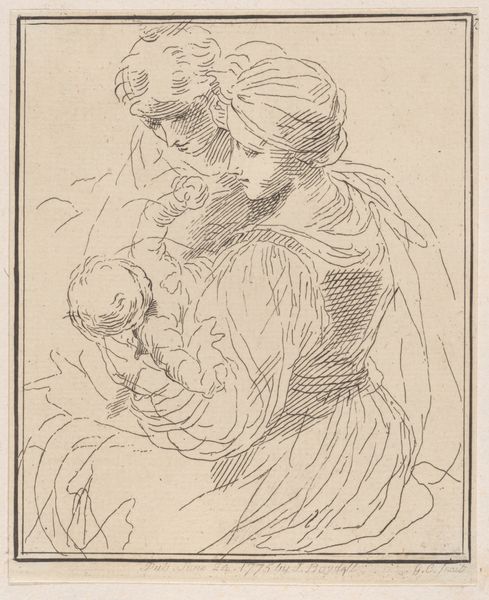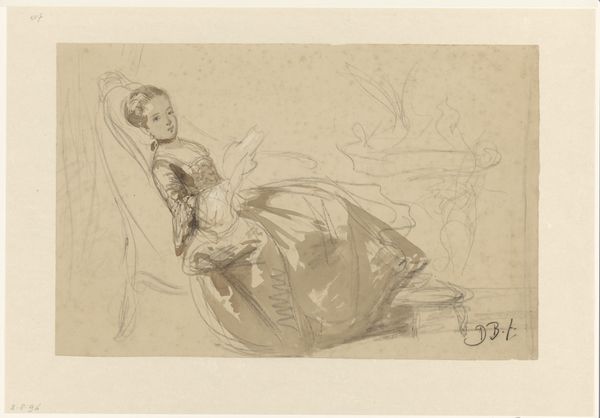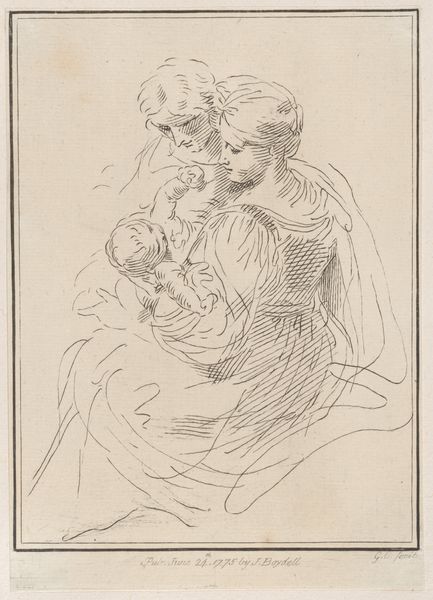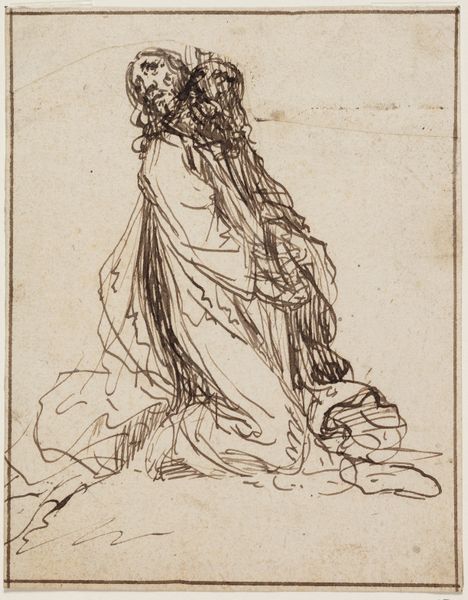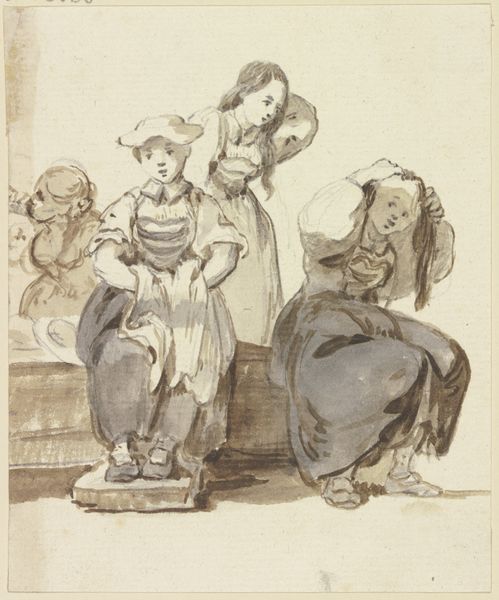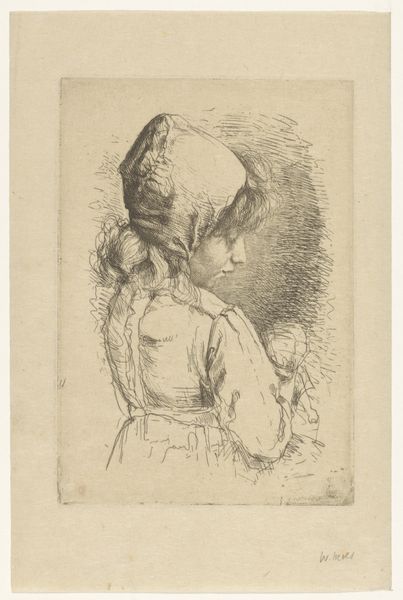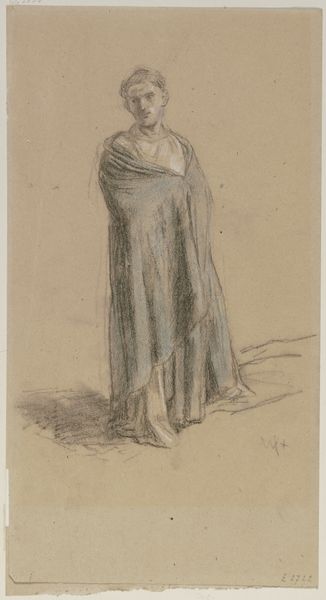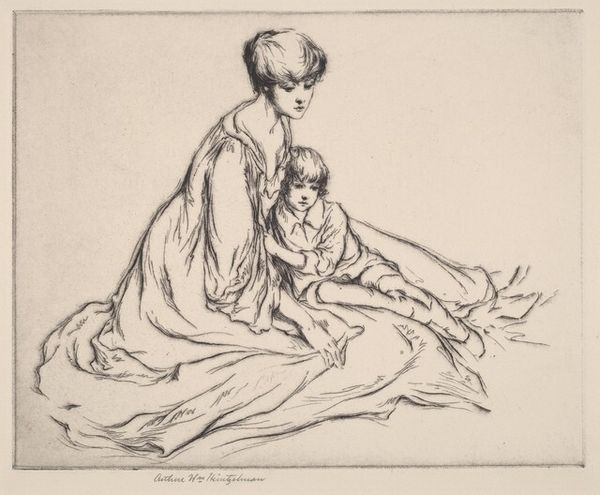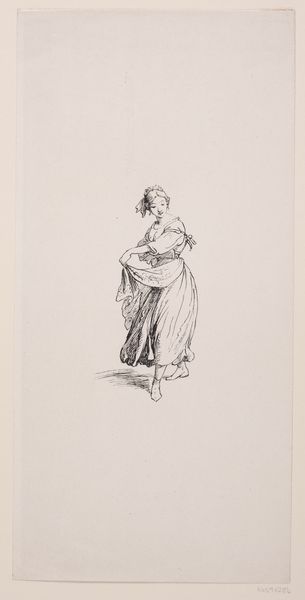
drawing, paper, ink
#
portrait
#
drawing
#
baroque
#
paper
#
ink
#
child
#
group-portraits
#
genre-painting
Dimensions: 8 7/8 x 7 3/16 in. (22.5 x 18.3 cm)
Copyright: Public Domain
Editor: So, this is "Study of a Woman and Two Children," a drawing by Joshua Reynolds, likely created sometime in the 1700s. It's rendered in ink on paper and strikes me as both intimate and dynamic. The swirling lines convey movement, but also a tender connection. What elements of the composition stand out to you? Curator: Certainly. We might begin by noting Reynolds' strategic use of line. Observe how the density of the ink strokes around the mother and the child in her arms creates a focal point. What semiotic readings might we draw from this emphasis? The contrasting lighter strokes defining the second child guide our eyes downward and provide balance. Note the figure's implied contrapposto stance. Editor: Interesting, I hadn't considered the formal aspects in such detail, I was so drawn into the familial theme. Are there other formal qualities that strike you? Curator: The negative space around the figures is also crucial. Notice how the lack of background detail forces the viewer to concentrate solely on the forms themselves, isolating them for close inspection and consideration of their relationship. In what ways might this serve the artwork? Editor: That’s a helpful insight! I can definitely see how the minimal background emphasizes the relationships between the figures, but could also invite varied projections on the depicted familial relationships. Curator: Precisely. Considering also the deliberate roughness of line, seemingly unfinished quality of the drawing. Reynolds uses a minimum number of lines to convey mass, form, and the emotion of familial relationships. Editor: Thank you! I’ve definitely gained a better understanding of how to deconstruct this drawing based on its form, beyond my initial thematic reading. Curator: And I see how accessible themes encourage engagement, leading to rewarding deeper formal investigations.
Comments
No comments
Be the first to comment and join the conversation on the ultimate creative platform.
